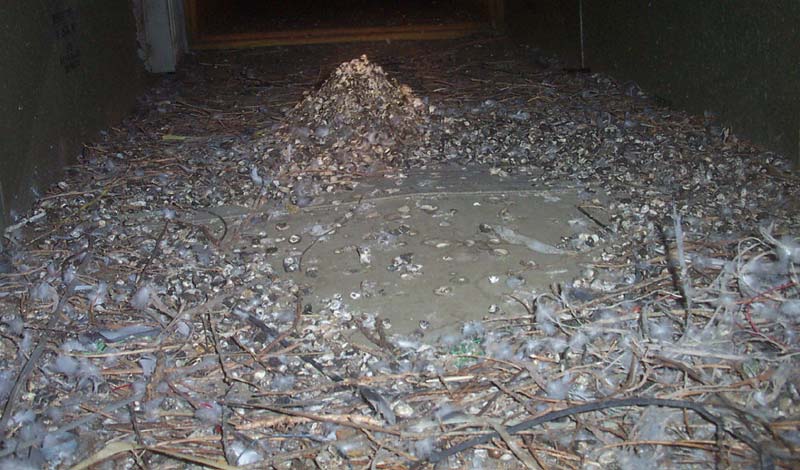
by Pigeon Patrol | Jun 30, 2023 | Bird Spike, Pigeon Spikes, Pigeons, Pigeons in the News, Raccoons, Sparrows, UltraSonic Bird Control
Q: I live on the 15th floor of an Upper East Side co-op with windows facing First Avenue. Pigeons are roosting on my window ledge. The birds’ vocalization is loud enough to wake me up in the morning and they leave behind gray and white stains from their droppings. I shoo the birds away when I’m home, but cannot do this all day. I want to be able to open my window in the spring without worrying that the germs from their droppings will enter my room. What can I place on my window ledge to discourage the pigeons from roosting there? I do not want to use anything that could fall off the ledge, endangering a pedestrian below, or poison the birds. What is a safe remedy?
A: You should be able to open your windows this spring without worrying that a pigeon will fly into your apartment or its droppings will soil your home. While their droppings do not generally pose a serious health risk, they are still unsanitary, and gross. But your building, not you, should get the birds off your ledge. As a shareholder, you are responsible for everything inside the walls of your apartment, and the co-op board is responsible for the building. So the board needs to figure out how to get the birds to find a new home.
“Residents should not attempt a solution on their own,” said Daniel Wollman, the chief executive of Gumley Haft, a Manhattan property manager.
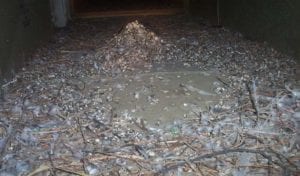
Write the managing agent and the co-op board a letter alerting them to the pigeon problem and insisting that they fix it. If the birds are nesting on your ledge, they are probably nesting on another resident’s, too. In the letter, ask that management also clean the ledge of any droppings.
The building should be able to get the birds to nest elsewhere without damaging the facade or risking the safety of anyone on the street below. For example, at a Gumley Haft-managed property with a pigeon problem in its inner courtyard, management suspended netting over the area to keep the birds away.
Netting will not solve the problem at your building, but there are other methods. John McGowan, the director of operations for Bugged Out Pest Management in Brooklyn suggested that your building consider using Bird Barrier Optical Gel, a bird deterrent, which he described as “awesome.”
Source
Pigeon Patrol Products & Services is the leading manufacturer and distributor or bird deterrent (control) products in Canada. Pigeon Patrol products have solved pest bird problems in industrial, commercial, and residential settings since 2000, by using safe and humane bird
deterrents with only bird and animal friendly solutions. At Pigeon Patrol, we manufacture and offer a variety of bird deterrents, ranging from Ultra-flex Bird Spikes with UV protection, Bird Netting, 4-S Bird Gel and the best Ultrasonic and audible sound devices on the market today.
Voted Best Canadian wholesaler for Bird Deterrent products ten years in a row.
Contact us at 1 877-4-NO-BIRD,(604) 585-9279 or visit our website at www.pigeonpatrol.ca
Pigeon/Pigeon Patrol / Pigeons Roosing / Vancouver Pigeon Control / Bird Spikes / Bird Control / Bird Deterrent / PIgeon Deterrent / Surrey Pigeon Control / Pest / Seagull deterrent / Vancouver Pigeon Blog / Birds Inside Home / Pigeons in the cities / Ice Pigeons / What to do about pigeons / sparrows, Damage by Sparrows, How to Keep Raccoons Away, Why Are Raccoons Considered Pests / De-fence / Pigeon Nesting / Bird Droppings / Pigeon Dropping / woodpecker control / Professional Bird Control Company / Keep The Birds Away / Birds/rats/seagull/pigeon/woodpecker/dove/sparrow/pidgeon control/pidgeon problem/pidgeon control/flying rats/pigeon problems/ bird netting/bird gel/bird spray/bird nails/bird guard
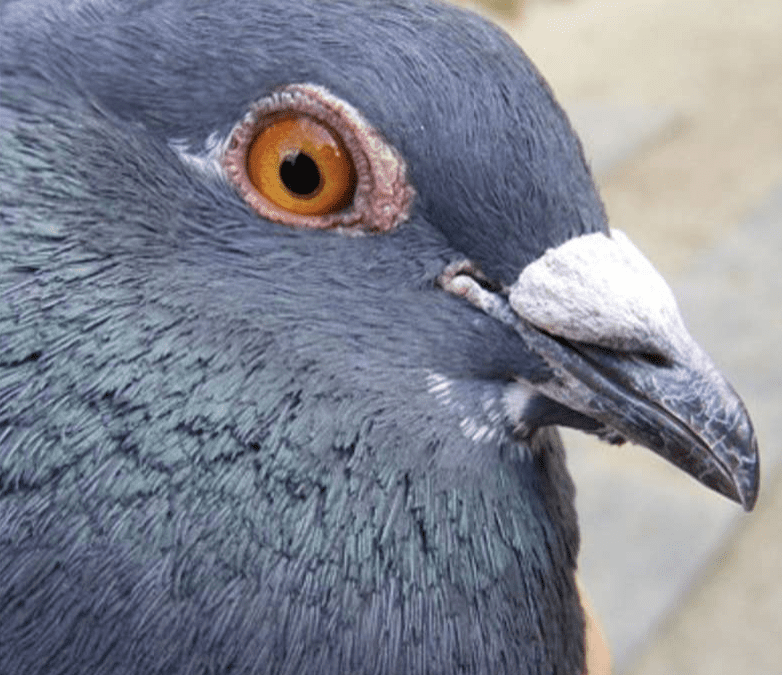
by Pigeon Patrol | Jun 21, 2023 | Bird Spike, Pigeon Predators, Pigeon Spikes, Pigeons, Pigeons in the News, Raccoons, Sparrows
A pigeon takeover can really disrupt your outdoor space. One day you see a few, the next day, a few hundred. Not to mention their droppings can stain or even corrode metal and painted surfaces.
Getting rid of pigeons starts with finding the root cause and planning your defense strategy accordingly. Here’s what could be attracting them and how to humanely get rid of them.
Why Do I Have Pigeons Around My Home?
Especially if you’re not in an urban location, it can be a mystery why pigeons have chosen to flock to your home. Despite their well-known tendency to inhabit cities, pigeons can be found just about anywhere, from large farmlands to small suburban apartments.
These are the main culprits that could be attracting pigeons to your home.
1. There’s a Feast Around
Above all, the pigeon’s main objective is to eat—and their peckish beaks will go for just about anything. They might go for the crops around your home, such as fruits (especially berries), grains, and beans.
If you have a bird feeder, they’ll bully smaller birds away and call upon their pigeon pals to come gorge. There could also be some trash can or compost munchies they’re going after.
Not sure what’s giving them a meal ticket? It helps to observe the pesky birds and note where they gather. Once you pinpoint what they’re pecking at, it will be that much easier to remove the temptation.
2. There’s a Good Perching Spot
Pigeons love a birds-eye view of the surrounding area—what better way to scope out a place to feed or nest? If you’ve got some prime perching real estate around, they’ll be all the more attracted to your property.
Here are a few of their top picks for perching:
- Ledges
- Balconies
- Gutter
- Roof
3. There’s a Suitable Nesting Area
Aside from eating, nesting is a pigeon’s other main objective. They prefer flat, warm, secluded surfaces such as:
- Barns
- Chimneys
- Garages
- Window sills
- Window AC units
- Solar panels
How to Get Rid of Pigeons
Whether it’s the noms or the nesting that has pigeons hooked on your turf, here’s what you can do to keep them away.
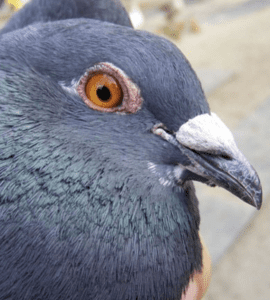
Adjust Your Bird Feeders
Bird feeders are a major attraction to pigeons, but that doesn’t mean you need to bid farewell to all your hungry feathered visitors. By getting feeders pigeons can’t (or don’t want to) access, your favorite songbirds can have their seed and eat it too.
Get a Weight-Sensitive Feeder
Weight-sensitive bird feeders are a great pigeon deterrent (and they’ll also keep ravenous squirrels at bay). These allow lightweight songbirds to munch freely while using weight-sensitive springs to shut feeding ports for pigeons and other heavier visitors.
Use Pigeon-Proof Feeders
Pigeons are large and heavy—and they’re no acrobats. You can deter them by selecting a feeder they can’t use, such as a hanging tube feeder, suet cake, or anything with tiny perches that they won’t be able to sit on.
Put Out Food They Don’t Like
As undiscerning as the pigeon’s appetite is, there are some seeds they tend to stay away from. Here are a few songbird-attracting seeds that pigeons don’t care for:
- Suet
- Nyjer
- Striped sunflower
Avoid the Food They Do Like
In the same vein, you’ll want to avoid the seeds that pigeons find scrumptious, which are often found in less-expensive seed mixes. These include:
Use a Seed Catcher
Those pretty songbirds aren’t the neatest eaters, and pigeons will happily flock to any seed that falls to the ground. If you’re having trouble in this area, consider adding a seed catcher, which is a wide tray that hangs just below the feeder. You can purchase a seed catcher online or attach a tray to your feeder with rope or chains.
Get Anti-Roosting Spikes
Anti-roosting spikes might seem painful at a glance, but they’re more of a visual deterrent than a physical one. Since birds can easily see the spikes, they know they aren’t able to perch and won’t try to do it.
Use a Fearsome Decoy
To keep pigeons away, try putting out a realistic decoy of a predatory animal, such as a snake or an owl. Pigeons tend to wise up to this tactic after a while, so it’s more effective if you move the decoy to different spots periodically. Even still, this is best paired with other solutions and deterrents.
Try a Repellent
Ultrasonic emitters and slippery gel repellents can keep pigeons from hanging out in your yard. However, the downside is that they’ll keep other birds away too. Avoid sticky repellents, as these can trap and injure smaller birds.
Tips for Dealing With Pigeons Around Your Home
While you’re working on giving them the permanent boot, use these tips to manage the pigeons around your home.
1. Don’t Feed the Birds
When pigeons disrupt the feeding of your regular songbird clientele, it’s tempting to throw some bread or cheap seed in a separate location as a diversion. While this presents a temporary solution, you’ll run into trouble when those pigeons tell their buddies about the free food and they all make it a regular place to frequent.
Along with that, be sure to close off or remove other potential food sources, such as trash cans and compost piles.
2. Keep a Consistent Cleanup Routine
While you’re in the midst of a pigeon problem, become well-acquainted with your hose’s power-spray setting. Their corrosive droppings can do serious damage to the surfaces and finishes around your yard, so you’ll want to stay on top of cleanup. Along with that, sweeping and keeping garbage in well-sealed containers can eliminate potential food sources.
3. Deter Pigeons With Reflective Materials
Shiny materials are disorienting and can keep pigeons away from their usual landing spot. Aluminum foil, reflective tape, shiny ribbon, and your old CD collection are all great options.
4. Cap Your Chimney
While it won’t single-handedly prevent a pigeon invasion, investing in a chimney cap is a wise thing to do if you haven’t already. Pigeons have a tendency to nest in chimneys, where they can often get stuck and pass away. That’s not ideal for either of you to go through, so you won’t regret being proactive.
DIY vs. Hire a Pro
Although the risk of pigeon-related illness is low, these birds can harbor disease and parasites. A local bird control service can help you safely deal with them and keep them from coming back. The cost to remove a bird’s nest ranges anywhere from $100 to $2,000.
If you decide to DIY, it’s best practice to wear protective clothing, including eyewear, a mask, and gloves when handling a bird or its droppings.
Additional Questions
How do I get rid of pigeons naturally?
Here are a few scents pigeons can’t stand:
- Cinnamon
- Hot peppers
- Peppermint
- Onion
- Garlic
What are pigeons most afraid of?
Pigeons are most deterred by the sight of predatory birds. These include owls, hawks, and other birds of prey.
Source
Pigeon Patrol Products & Services is the leading manufacturer and distributor or bird deterrent (control) products in Canada. Pigeon Patrol products have solved pest bird problems in industrial, commercial, and residential settings since 2000, by using safe and humane bird
deterrents with only bird and animal friendly solutions. At Pigeon Patrol, we manufacture and offer a variety of bird deterrents, ranging from Ultra-flex Bird Spikes with UV protection, Bird Netting, 4-S Bird Gel and the best Ultrasonic and audible sound devices on the market today.
Voted Best Canadian wholesaler for Bird Deterrent products ten years in a row.
Contact us at 1 877-4-NO-BIRD,(604) 585-9279 or visit our website at www.pigeonpatrol.ca
Pigeon/Pigeon Patrol / Pigeons Roosing / Vancouver Pigeon Control / Bird Spikes / Bird Control / Bird Deterrent / PIgeon Deterrent / Surrey Pigeon Control / Pest / Seagull deterrent / Vancouver Pigeon Blog / Birds Inside Home / Pigeons in the cities / Ice Pigeons / What to do about pigeons / sparrows, Damage by Sparrows, How to Keep Raccoons Away, Why Are Raccoons Considered Pests / De-fence / Pigeon Nesting / Bird Droppings / Pigeon Dropping / woodpecker control / Professional Bird Control Company / Keep The Birds Away / Birds/rats/seagull/pigeon/woodpecker/dove/sparrow/pidgeon control/pidgeon problem/pidgeon control/flying rats/pigeon problems/ bird netting/bird gel/bird spray/bird nails/bird guard
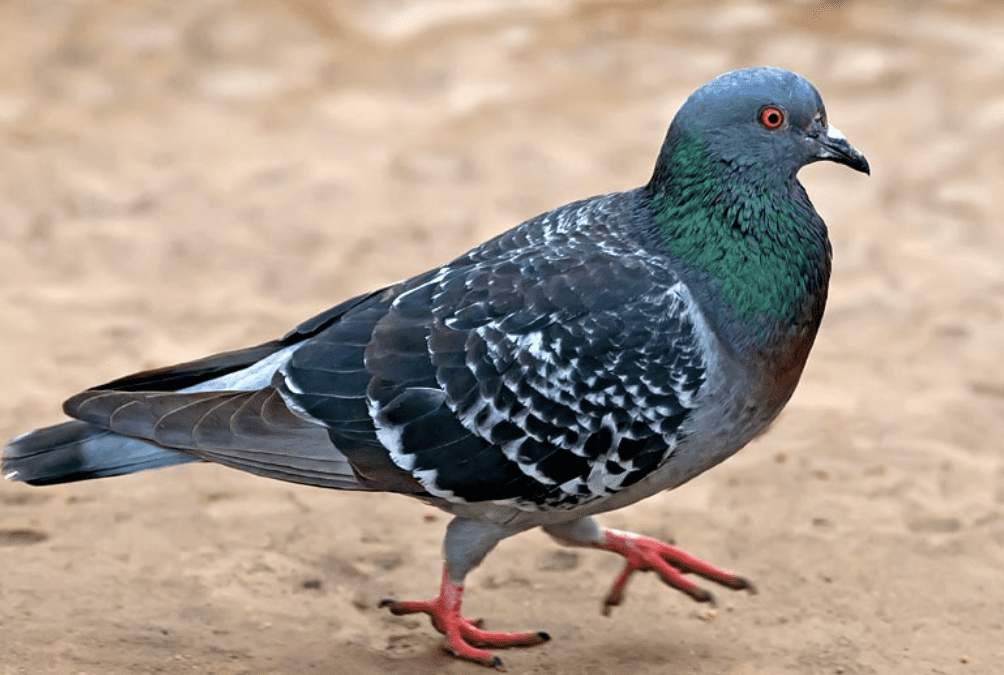
by Pigeon Patrol | Jun 21, 2023 | Bird Spike, Pigeon Droppings, Pigeon Patrol's Services, Pigeon Predators, Pigeon Spikes, Pigeons
Pigeons can carry lice, ticks and disease-bearing mites, and their acidic droppings can damage your car’s paint and anything else it comes in contact with. To make matters worse, once your home becomes their favorite place to perch or nest, it takes some effort to get rid of them.
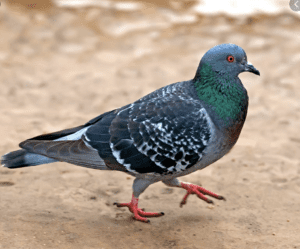
Luckily, you can encourage them to move somewhere else without causing them any harm. Here are 9 ways to get rid of pigeons if you have an infestation.
-
Make noise
An ultrasonic bird repeller discourages pigeons from landing on or near your house by emitting the sounds of their predators and bird distress calls. Because these sounds are ultrasonic, you won’t be able to hear them unless you turn the volume up to the highest setting. But, area pigeons will. While some pigeons will immediately leave your home after hearing the repeller, others will take time to associate your house with the noises and decide to roost elsewhere.
These devices start at about $50 and top out at $200, depending on how far they transmit the sounds (some can cover up to 5,000 square feet) and their features. On the downside, ultrasonic bird repellers don’t just repel pigeons. They can repel other animals, too, and can disturb your dog or cat.
-
Give them no place to roost
A common solution to a pigeon problem, bird spikes are thorn-like protrusions, usually made of plastic, that attach to a strip. When pigeons try to land, the spikes make it impossible to find a place to roost. Most homeowners install them to the roofline, but you can also install them on beams, window sills, ledges, fences and gates. You can purchase these at most home improvement and garden centers for $25 to $40 for a 7’ to 8’ strip.
Bird spikes are one of the most effective ways to get rid of pigeons because they can’t roost where there is no place for them. However, they can detract from your home aesthetically.
-
Be a bad host
Similar to bird spikes, bird wire runs 3” to 4” above the space where you don’t want pigeons to land. As a bird begins its descent, it contacts the wire, which will feel unsteady, and abort his landing. Over time, pigeons will determine your house isn’t a safe place to land and avoid it altogether.
To install bird wire, you’ll need thin, metal posts that attach to your roofline. Unfortunately, it’s not easy to find at home improvement stores or online, so you may have to hire a pest control company to install it for you.
-
Get a gel for that
Unlike bird wire, you can easily install bird repellant gel. This clear, sticky gel comes in a caulk tube that you apply to your roof, fence or wherever they perch. When a pigeon lands on the gel, it will sense its stickiness and leave. Each tube sells for about $15 to $20 and should cover about 10 to 12 feet.
It does have a few downsides. Bird repellant gel needs to be replaced at least annually and, as it collects dust, can become unsightly. On a more positive note, though, it’s virtually invisible and can reduce other pests, such as ants, which can get stuck in it.
-
Hang reflective tape
Another popular way to get rid of pigeons is to hang reflective scare tape, sometimes also called reflective bird tape or flash tape. Sold in rolls of up to 350 feet, this tape has a holographic pattern that interacts with light and disorients birds of all kinds. To use it, cut the tape into strips and hang them wherever you want to discourage the pigeons from landing.
Not only does the shiny “flash” from the tape fluttering in the breeze confuse and scare the pigeon but the sound of it moving upsets them, too. Some people don’t like the look of reflectors, but for less than $15 for 350 feet, it may be worth it.
-
Surprise them with a little sprinkle
Good for all types of pests, including skunks and raccoons, a motion-activated sprinkler scares pigeons away with a combination of sound and water whenever it detects motion. Once activated, it will blast water in the direction where motion was detected for 5 seconds. Most cost between $50 and $75 and can be customized to work only at certain times of the day. After its program, all you have to do is attach it to a hose.
These systems do have a drawback, though, in that they can’t tell the difference between a pigeon, your dog or the neighbor’s kid. If pets or other people routinely walk within the perimeter specified on the water jet’s packaging, you might want to consider using a different method.
-
Get an owl decoy
Pigeons want to avoid their predators just as much as any other bird. Use a frightening decoy to your advantage. Owl decoys work well to deter pigeons. You can find them at most home improvement and garden centers, and they can range from simple decoys with heads that rotate in a breeze to solar-powered ones that emit “hoots” and flap their wings.
Since most weigh very little, you’ll want to secure the base so it doesn’t tip over. And, although decoys are designed to withstand the elements, over time, you may need to clean the sensor on yours or replace the decoy outright. Another possible concern is decoys can deter other birds and smaller animals, like squirrels, from visiting your yard.
-
Lure them with bait
If you don’t have many pigeons to deal with, a pigeon trap may do the trick. Specifically designed for pigeons, these traps can accommodate up to 10 live birds. To use one, place fruit, seeds, cracked corn or other treats inside. When a bird enters through the one-way door to eat, it will close behind him, and he won’t be able to get out. Once you have trapped the birds, you can drive them far from your house and release them.
Traps generally cost between $75 and $100, but those with extra features, like shade covers or water dispensers, will cost more. The good news is they’re effective when you’re contending with a few birds; the bad, they don’t work well for infestations.
-
Be proactive
As creatures of habit, pigeons return to the same place over and over unless you give them a reason not to. While most of the above methods scare them away, you can also remove the things that first attracted them there. Cover all trash cans, pet food and standing water, like birdbaths. Put netting over fruit trees and your garden plants. And don’t overseed your grass or set out other seeds.
It also helps to seal off any gaps in your roof shingles, cap vents and chimneys, and fill any holes where they might nest. These steps will make your home less attractive and may encourage them to find another place with access to berries and places to make a nest.
Extra help
You’ll want to get your pigeon problem under control quickly if you plan to show your house or if you move into a new home with an infestation. In those cases, consider hiring a professional pest control company that will find the right solution for your unique situation.
Source
Pigeon Patrol Products & Services is the leading manufacturer and distributor or bird deterrent (control) products in Canada. Pigeon Patrol products have solved pest bird problems in industrial, commercial, and residential settings since 2000, by using safe and humane bird
deterrents with only bird and animal friendly solutions. At Pigeon Patrol, we manufacture and offer a variety of bird deterrents, ranging from Ultra-flex Bird Spikes with UV protection, Bird Netting, 4-S Bird Gel and the best Ultrasonic and audible sound devices on the market today.
Voted Best Canadian wholesaler for Bird Deterrent products ten years in a row.
Contact us at 1 877-4-NO-BIRD,(604) 585-9279 or visit our website at www.pigeonpatrol.ca
Pigeon/Pigeon Patrol / Pigeons Roosing / Vancouver Pigeon Control / Bird Spikes / Bird Control / Bird Deterrent / PIgeon Deterrent / Surrey Pigeon Control / Pest / Seagull deterrent / Vancouver Pigeon Blog / Birds Inside Home / Pigeons in the cities / Ice Pigeons / What to do about pigeons / sparrows, Damage by Sparrows, How to Keep Raccoons Away, Why Are Raccoons Considered Pests / De-fence / Pigeon Nesting / Bird Droppings / Pigeon Dropping / woodpecker control / Professional Bird Control Company / Keep The Birds Away / Birds/rats/seagull/pigeon/woodpecker/dove/sparrow/pidgeon control/pidgeon problem/pidgeon control/flying rats/pigeon problems/ bird netting/bird gel/bird spray/bird nails/bird guard
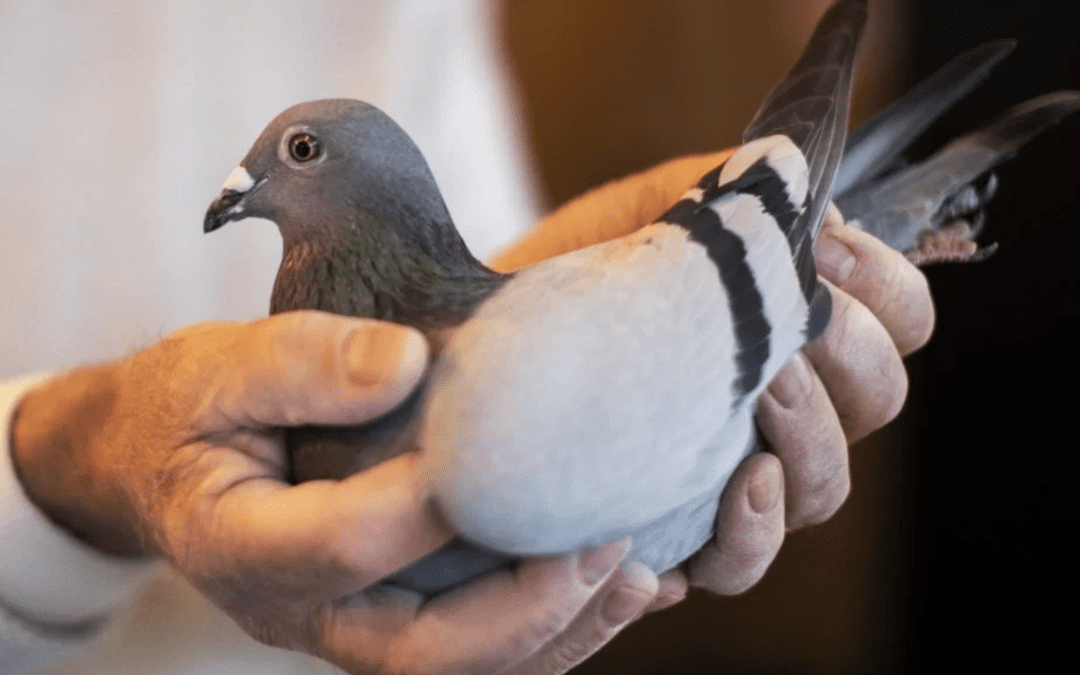
by Pigeon Patrol | Jun 21, 2023 | Bird Spike, Pigeon Predators, Pigeon Spikes, Pigeons, Pigeons in the News, Raccoons, Sparrows, UltraSonic Bird Control
Regardless of whether it’s around your home or a business premises, pigeons can be a nuisance.
While the odd one here or there is, of course, to be expected, if your property has become a popular place for these creatures to hang out, it can cause a number of problems.
• Bird droppings not only look unsightly, when wet they can be a serious slip hazard
• Pigeons do unfortunately deserve their reputation for being unhygienic and they do in fact carry more harmful diseases to humans than rats do
• Pigeon fouling and nest materials attract a whole host of insects including fleas, carpet beetles, flies, clothes moths and mealworm beetles
• Pigeon faeces is highly corrosive and can, therefore, cause extensive damage to your building if it sits there for an extended period of time
• Debris from flocks of pigeons can build up causing blockages to drains and gutters which can cause flooding and roof damage
• Clean-up costs can be high
As you may have gathered by now, it’s advisable to deal with pigeons before they become a huge problem. How exactly do you get rid of pigeons?
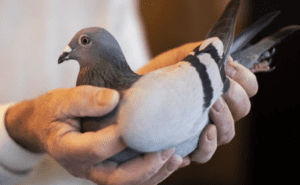
Remove any food sources
Pigeons are scavengers and will feed on nearly anything so make sure there are no possible food sources around your home or business premises. Don’t forget to check your roof and ensure that any outdoor areas are clean, no food scraps have been left out and that rubbish hasn’t been pulled out of your bins by other animals.
Store rubbish bags in metal bins with securely fitted lids so that pigeons can’t gain access to the contents. Try to avoid feeding pets outside or if you have to, clean away their bowl as soon as they’ve finished eating.
Install a decoy
If you look up at buildings you will probably notice some of them have fake Owls, lightweight kites in the form of hawk silhouettes, which are placed as a scare tactic. A good tip is to move the decoy on a regular basis because pigeons will get used to its presence and won’t be scared of t anymore – especially because it doesn’t make a noiseHomemade remedies
Some organic, homemade remedies have been known to be pretty effective. Try placing balls or containers of strong spices around your patio, exterior windowsills or wherever else pigeons tend to gather around your property. The best spices to use are chili powder, cayenne pepper, black pepper or cinnamon.
Don’t make your property pigeon-friendly
If it’s easy for pigeons to settle, they will. Check your property for pigeon-friendly places such as soffits, vents, chimneys, gutters and large gaps. Anywhere up high is naturally going to be an inviting place for these birds to nest and start a family. You can use a fine mesh screen to cover these areas to discourage pigeons from setting up home there.
Call a pest controller
The best thing to do if you’re faced with a pigeon problem is to call a pest controller. Highly experienced in this field, they will be able to provide you with a range of deterrent and proofing solutions which will provide a long-term solution.
Source
Pigeon Patrol Products & Services is the leading manufacturer and distributor or bird deterrent (control) products in Canada. Pigeon Patrol products have solved pest bird problems in industrial, commercial, and residential settings since 2000, by using safe and humane bird
deterrents with only bird and animal friendly solutions. At Pigeon Patrol, we manufacture and offer a variety of bird deterrents, ranging from Ultra-flex Bird Spikes with UV protection, Bird Netting, 4-S Bird Gel and the best Ultrasonic and audible sound devices on the market today.
Voted Best Canadian wholesaler for Bird Deterrent products ten years in a row.
Contact us at 1 877-4-NO-BIRD,(604) 585-9279 or visit our website at www.pigeonpatrol.ca
Pigeon/Pigeon Patrol / Pigeons Roosing / Vancouver Pigeon Control / Bird Spikes / Bird Control / Bird Deterrent / PIgeon Deterrent / Surrey Pigeon Control / Pest / Seagull deterrent / Vancouver Pigeon Blog / Birds Inside Home / Pigeons in the cities / Ice Pigeons / What to do about pigeons / sparrows, Damage by Sparrows, How to Keep Raccoons Away, Why Are Raccoons Considered Pests / De-fence / Pigeon Nesting / Bird Droppings / Pigeon Dropping / woodpecker control / Professional Bird Control Company / Keep The Birds Away / Birds/rats/seagull/pigeon/woodpecker/dove/sparrow/pidgeon control/pidgeon problem/pidgeon control/flying rats/pigeon problems/ bird netting/bird gel/bird spray/bird nails/bird guard
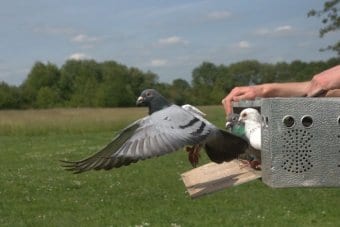
by Pigeon Patrol | Jun 14, 2023 | Bird Spike, Pigeon Predators, Pigeon Spikes, Pigeons, Pigeons in the News, Raccoons, Sparrows, UltraSonic Bird Control
A study on a population of pigeons on the University of South Africa’s Muckleneuk campus was conducted over 2 years. Counts were conducted during a baseline year (March 2013–February 2014) to establish the pigeon population index inhabiting the campus buildings, and again in the management year (August 2014–August 2015) once Eagle Eyes™, Fire (Flash) Flags, bird spikes and a combination thereof were implemented on the buildings. An efficacy reduction percentage was determined for each of the control structures. The total pigeon index on the campus declined by 50 % once the control structures were implemented. Control structures; however, differed markedly in efficacy from each other. Whilst bird spikes indicated the highest efficacy at reducing the pigeon population index, seasonality also influenced the efficacy of the control structure. Quantified understanding of the efficacy of pigeon control measures allows urban management to make informed decisions about reducing pigeon populations.
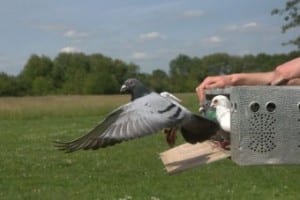
Source
Pigeon Patrol Products & Services is the leading manufacturer and distributor or bird deterrent (control) products in Canada. Pigeon Patrol products have solved pest bird problems in industrial, commercial, and residential settings since 2000, by using safe and humane bird
deterrents with only bird and animal friendly solutions. At Pigeon Patrol, we manufacture and offer a variety of bird deterrents, ranging from Ultra-flex Bird Spikes with UV protection, Bird Netting, 4-S Bird Gel and the best Ultrasonic and audible sound devices on the market today.
Voted Best Canadian wholesaler for Bird Deterrent products ten years in a row.
Contact us at 1 877-4-NO-BIRD,(604) 585-9279 or visit our website at www.pigeonpatrol.ca
Pigeon/Pigeon Patrol / Pigeons Roosing / Vancouver Pigeon Control / Bird Spikes / Bird Control / Bird Deterrent / PIgeon Deterrent / Surrey Pigeon Control / Pest / Seagull deterrent / Vancouver Pigeon Blog / Birds Inside Home / Pigeons in the cities / Ice Pigeons / What to do about pigeons / sparrows, Damage by Sparrows, How to Keep Raccoons Away, Why Are Raccoons Considered Pests / De-fence / Pigeon Nesting / Bird Droppings / Pigeon Dropping / woodpecker control / Professional Bird Control Company / Keep The Birds Away / Birds/rats/seagull/pigeon/woodpecker/dove/sparrow/pidgeon control/pidgeon problem/pidgeon control/flying rats/pigeon problems/ bird netting/bird gel/bird spray/bird nails/bird guard
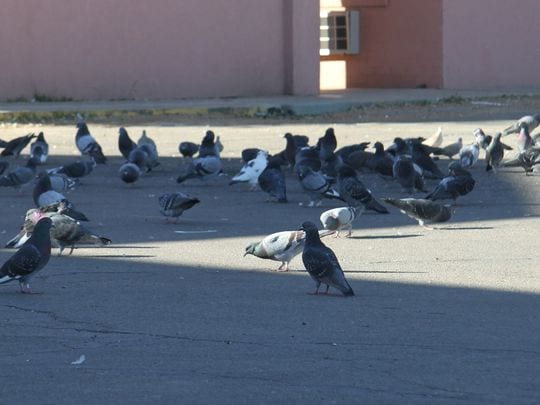
by Pigeon Patrol | Jun 14, 2023 | Bird Spike, Pigeon Predators, Pigeon Spikes, Pigeons, Pigeons in the News, Raccoons, Sparrows, UltraSonic Bird Control
Being a peregrine fanatic I’m kind of fond of pigeons – at least from the prey point of view – so when I was in downtown Pittsburgh on Sunday I stopped by Mellon Square to check out the scene.
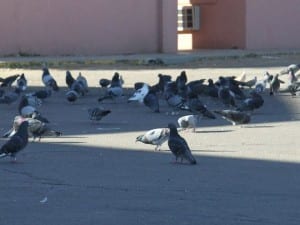
Even for a peregrine falcon the number of pigeons at Mellon Square is way too much of a good thing. I counted more than 150 and I couldn’t see all of them. The pigeons outnumbered people more than 30 to 1.
This explains why peregrines hang out on the Oliver Building window sills. It’s like visiting an all-you-can-eat restaurant. The food may not be that great but there’s so much of it!
This kind of pigeon over-population repulses most people and they want a quick fix, the quickest being poison. But if you poison a pigeon, you’ll poison a peregrine. After a culling episode pigeons reproduce fast to fill the void – in fact lethal control actually increases the flock – but the peregrines take years to recover. And peregrines are endangered in Pennsylvania. It’s bad, bad, bad to poison an endangered species.
So what to do?
Pigeons need two things to reach the numbers found at Mellon Square: lots of food and places to nest. They reproduce in direct proportion to their food supply. If food is scarce some won’t nest at all. If food is plentiful they lay the next clutch of eggs before the first set has hatched, producing more than 12 chicks per year.
The food problem is obvious. Sidewalks at Mellon Square are coated with bird seed. Control the food source (the people who feed them) and you’ve got most of the problem licked. To make a really dramatic difference, control the nest sites as well.
City pigeons nest on buildings and bridges. They also nest in buildings. Find the buildings involved and spend the time and money to block the access holes. Last summer the University of Pittsburgh cleaned the Cathedral of Learning and blocked off the pigeon nest holes as part of the cleaning job. One year later there are far fewer pigeons at Schenley Plaza.
And finally, there’s a foolproof solution that makes both the pigeon-feeders and the pigeon-haters happy. Many European cities have solved their pigeon problem permanently by building dovecotes and pigeon lofts. Yes, they built nest sites. They control the population at the dovecotes by substituting dummy eggs and they control the food level by giving pigeon lovers an approved place to feed and interact with the birds.
This keeps the pigeons and the birdseed off the street. An elegant solution.
Source
Pigeon Patrol Products & Services is the leading manufacturer and distributor or bird deterrent (control) products in Canada. Pigeon Patrol products have solved pest bird problems in industrial, commercial, and residential settings since 2000, by using safe and humane bird
deterrents with only bird and animal friendly solutions. At Pigeon Patrol, we manufacture and offer a variety of bird deterrents, ranging from Ultra-flex Bird Spikes with UV protection, Bird Netting, 4-S Bird Gel and the best Ultrasonic and audible sound devices on the market today.
Voted Best Canadian wholesaler for Bird Deterrent products ten years in a row.
Contact us at 1 877-4-NO-BIRD,(604) 585-9279 or visit our website at www.pigeonpatrol.ca
Pigeon/Pigeon Patrol / Pigeons Roosing / Vancouver Pigeon Control / Bird Spikes / Bird Control / Bird Deterrent / PIgeon Deterrent / Surrey Pigeon Control / Pest / Seagull deterrent / Vancouver Pigeon Blog / Birds Inside Home / Pigeons in the cities / Ice Pigeons / What to do about pigeons / sparrows, Damage by Sparrows, How to Keep Raccoons Away, Why Are Raccoons Considered Pests / De-fence / Pigeon Nesting / Bird Droppings / Pigeon Dropping / woodpecker control / Professional Bird Control Company / Keep The Birds Away / Birds/rats/seagull/pigeon/woodpecker/dove/sparrow/pidgeon control/pidgeon problem/pidgeon control/flying rats/pigeon problems/ bird netting/bird gel/bird spray/bird nails/bird guard












